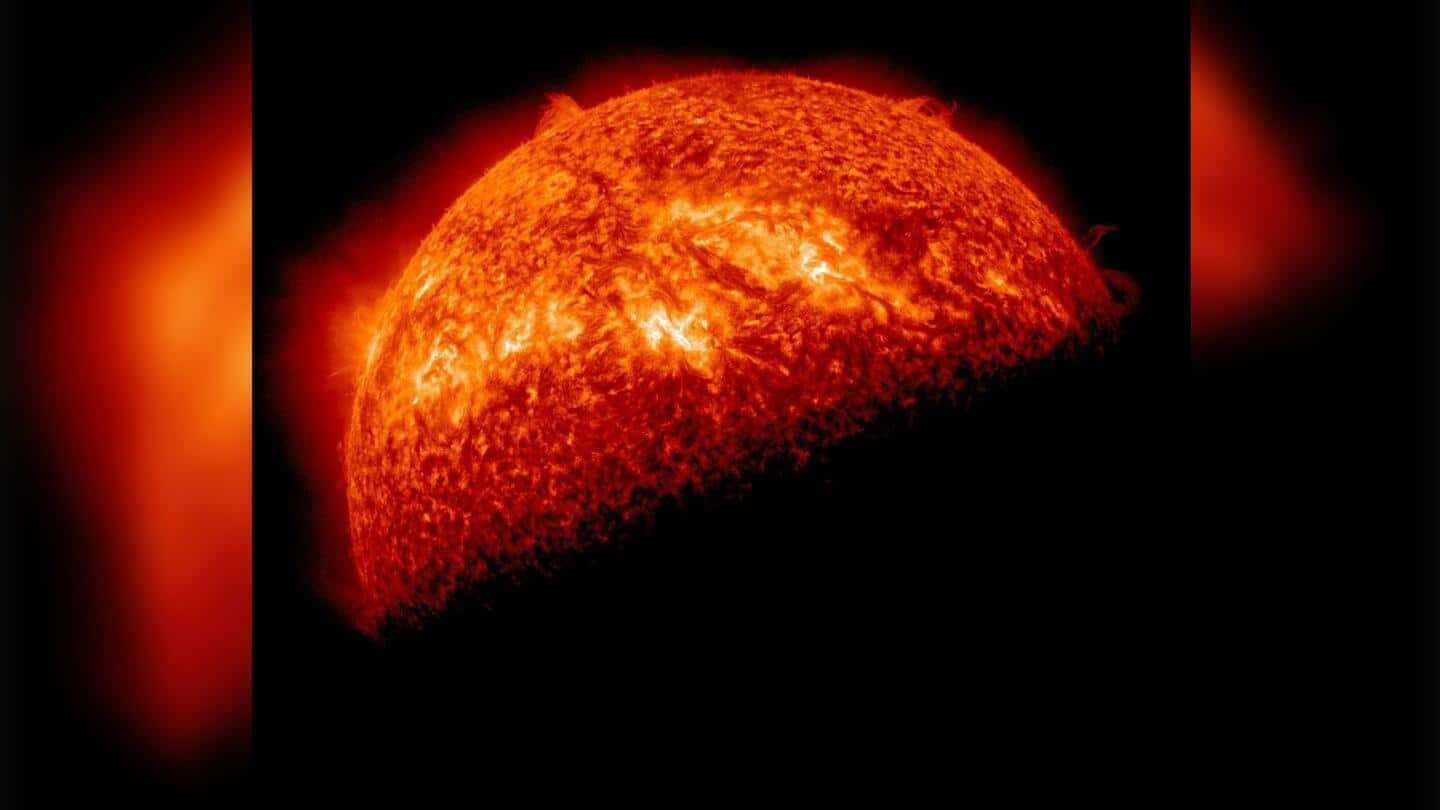
NASA's image reveals the Sun in all its glory
What's the story
NASA has shared a new picture of the Sun captured by the Solar Dynamic Observatory (SDO). Solar flares can be seen to be emerging from the surface of the Sun, which is estimated to be 4.5 billion years old. Bright spots of orange, yellow, and red are also observed while about half of the star is obscured by the Earth's shadow.
Context
Why does this story matter?
There are several spacecraft monitoring the Sun round the clock and their contributions enhance our understanding in the field of heliophysics. Solar flares, as seen in the image, are powerful bursts of electromagnetic radiation and are considered the solar system's largest explosive events. They can interfere with communication systems, radio and navigation signals, and electric power grids and can pose a threat to spacecraft.
Reason
Why is half of the Sun obscured in the image?
SDO slips behind the Earth for up to 72 minutes a day, as per NASA. This is the reason why the Sun is obscured by the Earth's shadow, as seen in the picture. The SDO is constantly in view of radio antennas on Earth because of its orbital path and enters an eclipse season twice a year.
Official words
The Sun is in the middle of its lifecycle
"Cosmically middle-aged and classified as a yellow dwarf, the Sun's dynamic and ever-changing nature constantly sends energy into the solar system," stated NASA in its official post on Instagram. "Scientists can estimate the age of the Sun by looking at the most ancient things in our solar system, which along with the Sun, all formed around the same time."
SDO
SDO has three in-house scientific experiments
SDO, which launched in 2010, investigates the origin of solar activity and its influence on space weather. It is located in the geosynchronous orbit and maintains a "figure-eight path over the longitude of New Mexico." It has three onboard scientific experiments: Atmospheric Imaging Assembly (AIA), EUV Variability Experiment, and Helioseismic and Magnetic Imager (HMI). The AIA takes images in 10 wavelengths every 10 seconds.
Information
The Sun measures about 1.4 million kilometers in width
The Sun, which lies 150 million kilometers from the Earth, is a medium-sized star and is hence called a 'yellow dwarf.' As per NASA, the Sun measures 1.4 million kilometers across and its core can heat up to 15 million degrees Celsius.